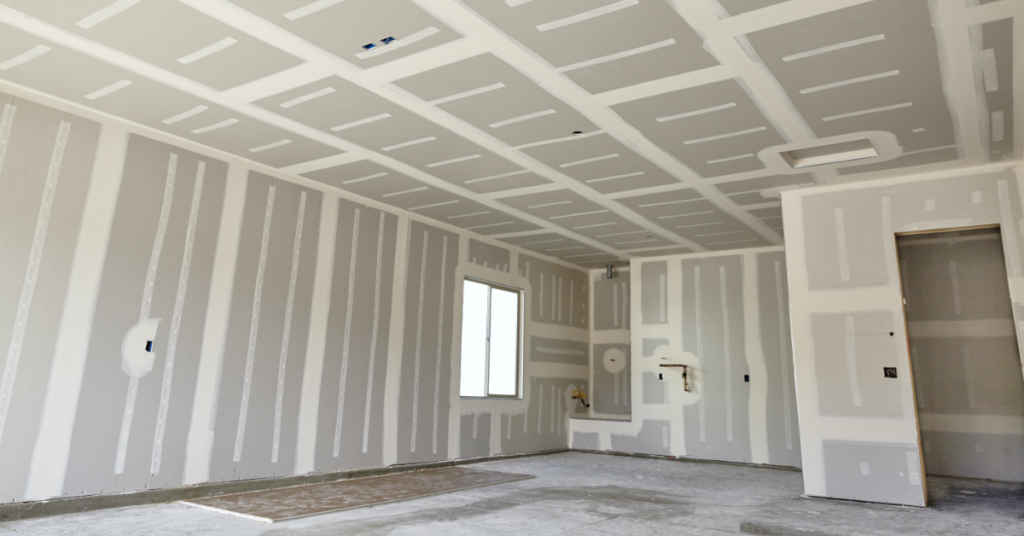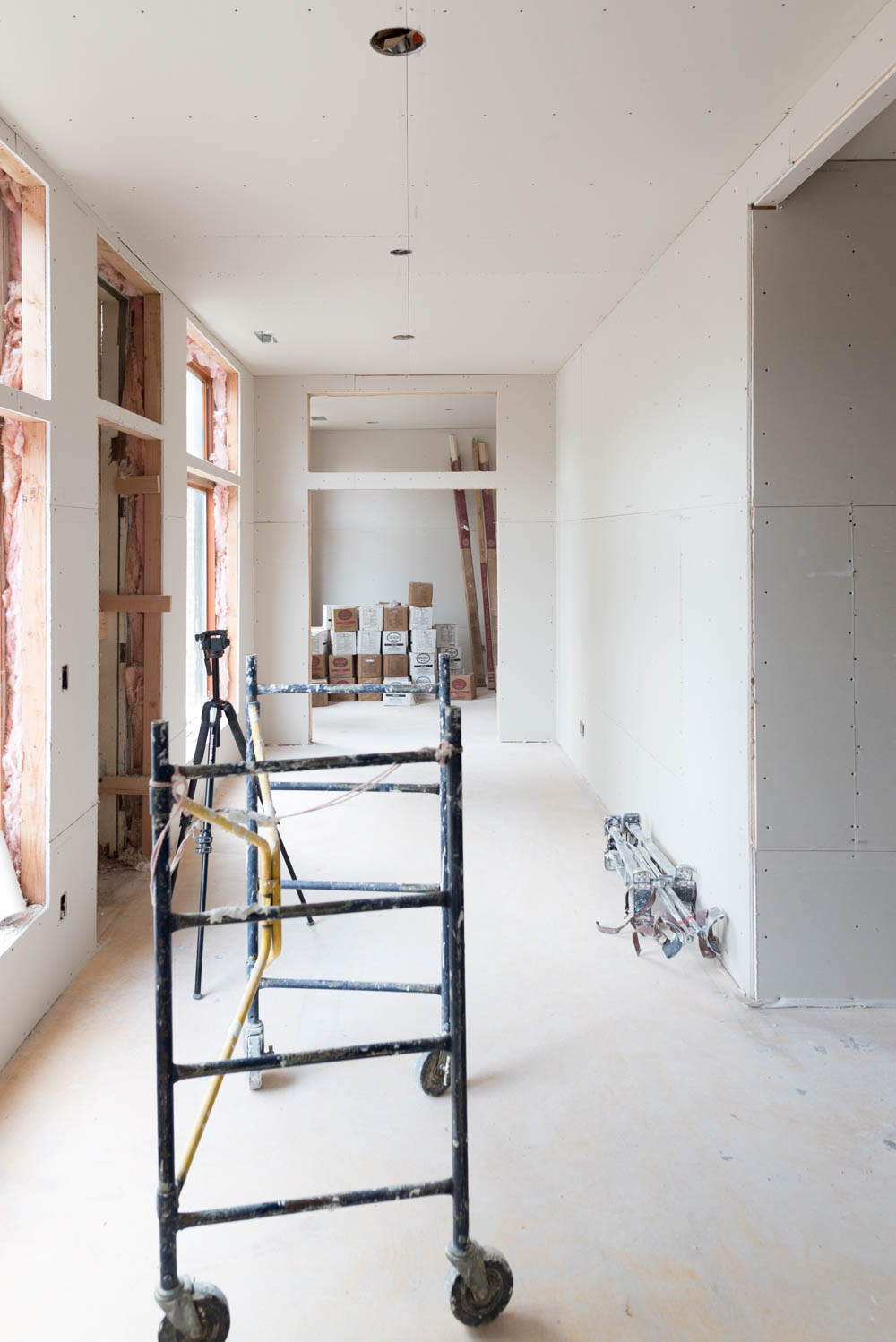Working With the most effective Drywall Contractors in Edmonton: A Comprehensive List
Wiki Article
Whatever You Required to Know Concerning Drywall Setup: A Comprehensive Guide

Understanding Drywall Basics
Recognizing the fundamentals of drywall is important for any kind of successful setup job. Drywall, additionally referred to as plaster board or plasterboard, is a popular building and construction material utilized to develop interior walls and ceilings. It consists of a gypsum core sandwiched in between two layers of paper. The plaster core supplies the required strength and rigidness, while the paper layers safeguard the core from damages and provide a smooth surface for ending up.
The most typical kinds include normal drywall, moisture-resistant drywall, and fire-resistant drywall. Regular drywall is appropriate for the majority of interior applications, while moisture-resistant drywall is advised for locations with high humidity, such as restrooms and kitchens.
One more trick aspect of drywall basics is understanding the standard dimensions and thicknesses available. One of the most common dimensions are 4x8 feet and 4x12 feet, with thicknesses ranging from 1/4 inch to 5/8 inch. Thicker drywall is normally utilized for applications that require raised fire resistance or soundproofing.
Tools and Materials Needed for Drywall Installment
To successfully install drywall, it is crucial to have the needed devices and products accessible (drywall contractors). These products and devices are essential for achieving a professional surface and making certain the toughness of the installationMost importantly, you will need a determining tape to accurately gauge the measurements of the location where the drywall will certainly be mounted. An utility knife is vital for cutting the drywall to the required shapes and size. Additionally, a drywall saw can be utilized for making much more intricate cuts, such as around outlets or home windows.
Next, you will need a screw gun or a drill with a screwdriver little bit to safeguard the drywall to the wall studs. Screws, specifically drywall screws, are essential for attaching the drywall to the studs. It is essential to use the appropriate length of screws to make certain a flush and safe and secure installation.

In regards to materials, you will need the drywall itself, joint compound for completing joints and gaps, and tape for enhancing the joints. Sandpaper or a sanding block will be needed for smoothing out the joint compound after it has dried.
Preparing the Room for Drywall Setup
Prior to waging the drywall installment, it is vital to appropriately prepare the room to guarantee a smooth and effective setup process. Preparing the area entails a number of crucial steps that need to be followed diligently.To start with, it is important to get rid of the location of any type of furniture, components, or other items that may obstruct the installation process. This will certainly give the installers with sufficient space to work and maneuver about. Furthermore, it is suggested to cover the floors and any type of continuing to be things with safety sheets or drop fabrics to avoid any damages or particles from dropping onto them.
Following, it is necessary to evaluate the walls and ceiling for any kind of existing damage, such as fractures, openings, or water spots. These problems ought to be repaired prior to the installation to make certain a smooth and even surface area for the drywall. Any loose paint or wallpaper must additionally be gotten rid of, and the walls need to be extensively cleansed and cleaned.
Furthermore, electric and plumbing fixtures should be shut off and safeguarded to protect against any kind of accidents or damage during the installation process. It is important to turn off the power supply to the area and remove any type of electric cover plates before starting the installation.
Finally, it is suggested to seek advice from a specialist or describe local building codes to make Edmonton drywallers sure conformity with safety and security laws and acquire any type of needed licenses prior to continuing with the installation. By effectively preparing the area, you can make sure a effective and reliable drywall setup procedure.
Step-by-Step Guide to Hanging Drywall
To guarantee an effective drywall installation, it is very important to comply with a step-by-step overview for hanging the drywall (Edmonton drywallers). This process calls for precision and focus to detailFirst, gather all the essential tools and products, consisting of drywall sheets, an energy knife, a drywall saw, a tape procedure, a drill, and screws.
Following, begin by determining the measurements of the wall or ceiling where the drywall will certainly be installed. Transfer these measurements onto the drywall sheets, marking where cuts require to be made - Edmonton drywallers. Make use of a straight side and an energy blade to score the drywall along the marked lines, then break it along ball game line
As soon as the drywall sheets are cut to size, they can be held on the wall or ceiling. Begin at one corner and place the initial sheet up and down versus the framing. Use screws to safeguard the drywall to the studs, making certain to leave a little gap between sheets for growth.
Continue this procedure, functioning your means across the wall surface or ceiling. Ensure that each sheet is level and flush with adjacent sheets. Utilize a drywall attended eliminate any kind of needed openings for electric outlets or buttons.
Completing Techniques for a Professional Appearance
Currently that the drywall sheets have been efficiently hung, it is vital to utilize ending up techniques that will cause a expert and polished appearance. Accomplishing a perfect and smooth finish on drywall calls for cautious interest to detail and using correct devices and methods. Among the primary steps in the finishing process is to load the joints and screw imprints with joint substance. This can be done by using a slim layer of substance over the joints using a taping knife, and after that installing drywall tape into the compound. When the tape is in place, an additional layer of compound must be applied over it, feathering the edges to produce a smooth shift. After the substance has dried out, it is crucial to sand the surface to remove any blemishes and create a seamless coating. A pole sander or fining sand block can be utilized for this objective. The walls need to be primed and repainted to finish the finishing procedure. Using high-quality paint and applying it equally with a roller or brush will make sure a expert and long-lasting coating. By following these completing strategies, your drywall installation will have a professional and sleek look.Conclusion
Finally, understanding the essentials of drywall setup is vital for a successful job. By utilizing the proper tools and products, preparing the room sufficiently, and adhering to a detailed overview, one can achieve a professional-looking surface. Interest to completing techniques will certainly further enhance the general look. With this thorough guide, any person can with confidence deal with a drywall installation job.The most usual kinds include regular drywall, moisture-resistant drywall, and fire-resistant drywall. Normal drywall is suitable for a lot of interior applications, while moisture-resistant drywall is advised for areas with high moisture, such as shower rooms and kitchen areas. Screws, specifically drywall screws, are required for connecting the drywall to the studs. These issues need to be fixed prior to the installation to guarantee a smooth and also surface area for the drywall. By following these finishing techniques, your drywall setup will certainly have a sleek and professional look.
Report this wiki page